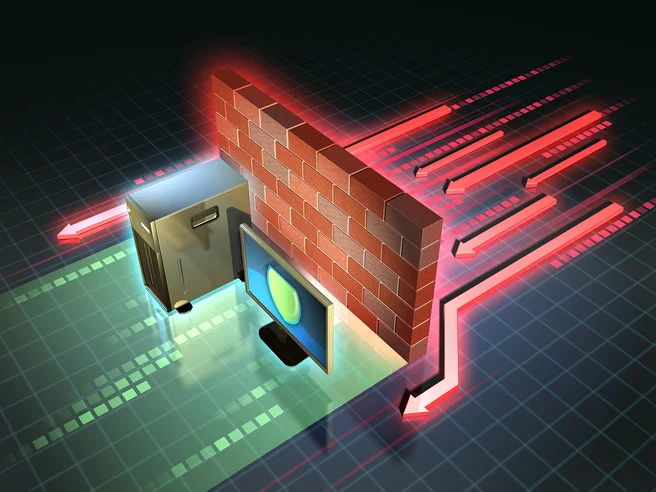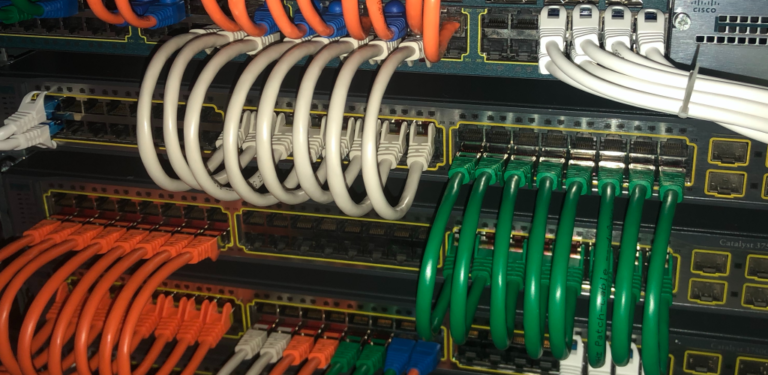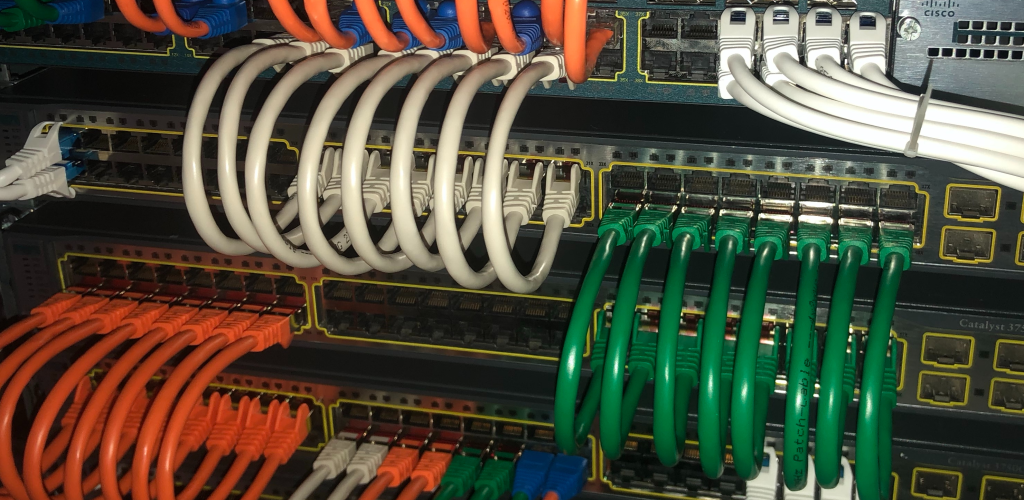Software-Defined Networking (SDN) is an innovative networking approach that centralizes network infrastructure management through software. This method simplifies traditional network management by separating the control plane from the data plane, enabling programmable and automated network administration. SDN provides several advantages, including enhanced network agility, scalability, and flexibility.
The centralized management allows administrators to swiftly implement network changes, such as introducing new services or modifying traffic flow. This agility is crucial in today’s rapidly evolving business landscape, where quick adaptation to changing requirements is essential for success. Moreover, SDN enables more efficient utilization of network resources by dynamically allocating bandwidth and other assets based on real-time demand.
This can result in cost reductions and improved overall network performance. SDN also offers greater visibility into network traffic and behavior, aiding in the identification and mitigation of potential security threats. In summary, SDN represents a significant paradigm shift in network management, offering a more efficient and adaptable approach to managing network infrastructure.
Key Takeaways
- SDN allows for centralized network management and programmability
- Assess your network needs and goals before choosing a Cisco SDN solution
- Choose the right Cisco SDN solution based on your network requirements
- Implement Cisco’s SDN solutions to improve network agility and scalability
- Monitor and manage your network effectively with Cisco’s SDN solutions
- Optimize performance and security using Cisco’s SDN solutions
- Future-proof your network by leveraging Cisco’s SDN solutions for long-term scalability and flexibility
Assessing Your Network Needs and Goals
Evaluating Network Size and Complexity
The size and complexity of your network are key considerations when selecting an SDN solution. Larger, more complex networks may require a more robust SDN solution with advanced features and capabilities. Additionally, it is essential to consider specific organizational requirements, such as high availability, security, and compliance with industry regulations.
Assessing Organizational Expertise
Implementing an SDN solution may require specialized skills and knowledge. Therefore, it is vital to assess whether your team has the necessary expertise or if additional training or support will be required.
Future-Proofing Your Network
Finally, it is essential to consider future growth and scalability. Your chosen SDN solution should be able to accommodate future expansion and evolving network requirements without requiring a complete overhaul of your network infrastructure. By carefully evaluating your network needs and goals, you can ensure the chosen Cisco SDN solution effectively meets your organization’s requirements and provides a solid foundation for future growth and innovation.
Choosing the Right Cisco SDN Solution for Your Network

Cisco offers a range of SDN solutions designed to meet the diverse needs of organizations of all sizes and industries. When choosing the right Cisco SDN solution for your network, it is important to consider several key factors to ensure that the chosen solution aligns with your organization’s requirements. One important consideration is the level of automation and programmability required for your network.
Cisco’s Application Centric Infrastructure (ACI) is a comprehensive SDN solution that provides advanced automation and programmability capabilities, making it ideal for organizations with complex networking requirements and a need for high levels of agility and flexibility. For organizations with more straightforward networking needs, Cisco’s Software-Defined Access (SD-Access) solution offers simplified network management and policy enforcement through automation and centralized control. This solution is well-suited for organizations looking to streamline network operations and improve overall efficiency.
Another important factor to consider is the level of security required for your network. Cisco’s SDN solutions offer advanced security features, such as micro-segmentation and threat detection, to help protect against evolving security threats. It is important to assess your organization’s security requirements and choose a Cisco SDN solution that provides the necessary level of protection.
Additionally, it is important to consider the scalability and future growth potential of the chosen SDN solution. Cisco’s SDN solutions are designed to accommodate future expansion and evolving network requirements, making them a solid choice for organizations looking to future-proof their network infrastructure. By carefully considering these factors, you can choose the right Cisco SDN solution for your network that effectively meets the requirements of your organization and provides a solid foundation for future growth and innovation.
Implementing Cisco’s SDN Solutions
Implementing Cisco’s SDN solutions requires careful planning and execution to ensure a smooth transition and minimal disruption to network operations. The implementation process typically involves several key steps, including assessing current network infrastructure, designing the new SDN architecture, deploying the new solution, and testing and optimizing performance. The first step in implementing Cisco’s SDN solutions is to assess your current network infrastructure to identify any potential challenges or areas for improvement.
This involves conducting a thorough audit of existing network devices, applications, and services to gain a clear understanding of the current state of the network. Once the current state of the network has been assessed, the next step is to design the new SDN architecture based on the chosen Cisco solution. This involves creating a detailed plan for deploying new hardware, software, and configurations, as well as defining policies and rules for network management and security.
The deployment phase involves installing and configuring the new hardware and software components of the chosen Cisco SDN solution. This may involve replacing existing network devices with new SDN-enabled devices, updating software versions, and integrating new management tools into the network infrastructure. After deployment, thorough testing is essential to ensure that the new SDN solution meets performance and security requirements.
This may involve conducting various tests, such as traffic load testing, failover testing, and security vulnerability testing, to identify any potential issues or areas for improvement. Finally, ongoing optimization is crucial to ensure that the new SDN solution continues to meet the evolving needs of your organization. This may involve fine-tuning configurations, updating policies, and implementing new features or capabilities as needed.
By following these key steps and best practices, organizations can effectively implement Cisco’s SDN solutions and realize the benefits of improved network agility, scalability, and security.
Monitoring and Managing Your Network with Cisco’s SDN Solutions
Once Cisco’s SDN solutions have been implemented, ongoing monitoring and management are essential to ensure optimal performance and security. Cisco offers a range of tools and capabilities designed to simplify network management and provide greater visibility into network traffic and behavior. One key aspect of monitoring and managing your network with Cisco’s SDN solutions is centralized control.
By centralizing network management through software-defined policies and automation, administrators can quickly make changes to the network, such as adding new services or adjusting traffic flow, without having to manually configure individual network devices. Additionally, Cisco’s SDN solutions offer advanced analytics capabilities that provide greater visibility into network traffic patterns and behavior. This can help in identifying potential security threats or performance issues and enable administrators to take proactive measures to address them.
Furthermore, Cisco’s SDN solutions provide comprehensive reporting capabilities that allow administrators to track key performance metrics and compliance with industry regulations. This can help in identifying areas for improvement and ensuring that the network continues to meet the evolving needs of your organization. Overall, Cisco’s SDN solutions offer a range of tools and capabilities designed to simplify network monitoring and management, providing greater visibility into network traffic patterns and behavior while enabling administrators to quickly make changes to the network as needed.
Optimizing Performance and Security with Cisco’s SDN Solutions

Dynamic Resource Allocation for Optimized Performance
By leveraging software-defined policies and automation, administrators can dynamically allocate bandwidth and other resources based on real-time demand, ensuring that critical applications receive the necessary resources while maximizing overall network efficiency. Additionally, Cisco’s SDN solutions offer advanced traffic engineering capabilities that enable administrators to optimize traffic flow across the network. This can help in reducing congestion and latency while improving overall application performance.
Advanced Security Measures for Threat Protection
In terms of security, Cisco’s SDN solutions provide advanced threat detection capabilities that help protect against evolving security threats. By leveraging advanced analytics and machine learning algorithms, these solutions can identify potential security breaches or anomalies in network behavior and enable administrators to take proactive measures to address them.
Micro-Segmentation for Granular Security Control
Furthermore, micro-segmentation capabilities offered by Cisco’s SDN solutions enable administrators to create isolated security zones within the network, reducing the impact of potential security breaches while providing granular control over access permissions.
Overall, Cisco’s SDN solutions offer a range of features and capabilities designed to optimize performance and security within modern network infrastructures, providing greater agility, flexibility, and protection against evolving threats.
Future-Proofing Your Network with Cisco’s SDN Solutions
Future-proofing your network is essential in today’s fast-paced business environment, where technology is constantly evolving. Cisco’s SDN solutions are designed to accommodate future growth and evolving networking requirements while providing a solid foundation for innovation. One key aspect of future-proofing your network with Cisco’s SDN solutions is scalability.
These solutions are designed to accommodate future expansion without requiring a complete overhaul of your network infrastructure. This can help in reducing costs and minimizing disruption as your organization grows. Additionally, Cisco’s SDN solutions offer advanced automation and programmability capabilities that enable administrators to quickly adapt to changing requirements without having to manually configure individual network devices.
This level of agility is essential in today’s fast-paced business environment where the ability to quickly adapt to changing requirements is crucial for success. Furthermore, by centralizing network management through software-defined policies and automation, Cisco’s SDN solutions provide greater flexibility in adapting to new technologies and services as they emerge. This can help in ensuring that your organization remains competitive in an ever-changing market landscape.
Overall, Cisco’s SDN solutions offer a range of features and capabilities designed to future-proof your network infrastructure while providing greater agility, flexibility, scalability, and protection against evolving threats. By leveraging these solutions, organizations can ensure that their networks remain adaptable and resilient in the face of constant technological change.
If you’re interested in learning more about network redundancy, check out this helpful article on first hop redundancy protocol. Understanding how to implement redundancy in your network can be crucial for maintaining uptime and ensuring reliability.
FAQs
What is Software-Defined Networking (SDN)?
Software-Defined Networking (SDN) is an approach to networking that uses software-based controllers or application programming interfaces (APIs) to communicate with the underlying hardware infrastructure and direct traffic on the network.
How does SDN differ from traditional networking?
In traditional networking, network devices such as routers and switches make independent decisions about how to handle network traffic. In SDN, the control plane is decoupled from the data plane, allowing for centralized control and programmability of the network.
What are the benefits of using Cisco’s SDN solutions?
Cisco’s SDN solutions offer benefits such as improved network agility, simplified network management, enhanced security, and the ability to quickly adapt to changing business needs.
How can I optimize my network with Cisco’s SDN solutions?
To optimize your network with Cisco’s SDN solutions, you can leverage features such as network automation, policy-based network segmentation, and centralized network management to improve performance, security, and scalability.
What are some key components of Cisco’s SDN solutions?
Key components of Cisco’s SDN solutions include the Cisco Application Centric Infrastructure (ACI), Cisco DNA Center, and Cisco Software-Defined Access (SD-Access), which provide tools for automating network provisioning, enforcing security policies, and simplifying network operations.













